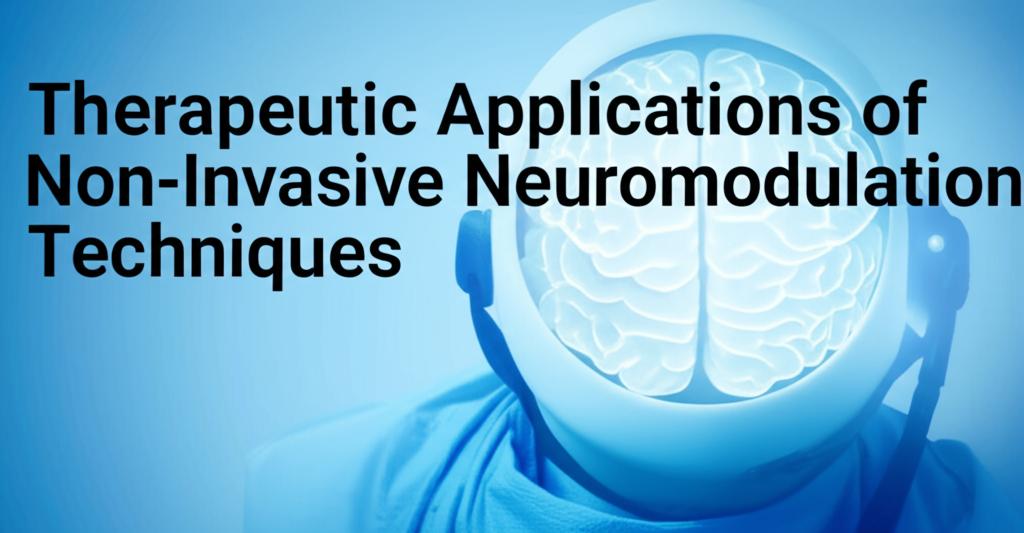Non-invasive neuromodulation techniques represent a rapidly advancing field in neuroscience, offering innovative ways to treat a variety of neurological and psychiatric conditions without the need for surgery. These methods utilize external stimuli, such as magnetic fields, electrical currents, or sound waves, to interact with the brain's neural circuits, aiming to restore normal function or alleviate symptoms.
Established Methods and Their ApplicationsTranscranial Magnetic Stimulation (TMS) is one of the most established non-invasive techniques. It employs focused magnetic pulses delivered from a coil placed on the scalp to induce electrical currents in specific cortical brain regions. Repetitive TMS (rTMS) has gained significant traction and received regulatory approval (e.g., FDA approval) for treating medication-resistant major depressive disorder. Research continues to explore its effectiveness for other conditions, including anxiety disorders, obsessive-compulsive disorder (OCD), post-traumatic stress disorder (PTSD), schizophrenia (particularly negative symptoms), chronic pain, stroke rehabilitation, Parkinson's disease symptoms, and addiction. Recent advancements include accelerated TMS protocols, like theta-burst stimulation (TBS), designed to shorten treatment duration, potentially offering relief within days instead of weeks. Furthermore, artificial intelligence (AI) is being integrated to personalize TMS treatments by analyzing brain activity patterns (like EEG) to predict patient response.
Transcranial Electrical Stimulation (tES) encompasses several methods that apply weak electrical currents to the scalp. Transcranial direct current stimulation (tDCS) uses a constant, low-intensity current to modulate neuronal excitability – increasing it (anodal stimulation) or decreasing it (cathodal stimulation). Transcranial alternating current stimulation (tACS) employs oscillating currents at specific frequencies to interact with the brain's natural rhythms. Transcranial random noise stimulation (tRNS) applies current across a spectrum of frequencies. These tES techniques are being investigated for a wide range of applications, including depression, chronic pain management, cognitive enhancement (in healthy individuals and those with neurological deficits), stroke recovery (addressing motor impairments like hemiparesis and language deficits like aphasia), Parkinson's disease, and schizophrenia. tES methods are generally considered safe, portable, and relatively inexpensive compared to TMS, making them attractive options, though optimizing stimulation parameters and understanding their precise mechanisms remain active research areas.
The New Frontier: Focused UltrasoundTranscranial Focused Ultrasound (tFUS), sometimes referred to as Transcranial Ultrasound Stimulation (TUS) or Low-Intensity Focused Ultrasound (LIFU) when emphasizing non-thermal effects, represents a groundbreaking advancement in non-invasive neuromodulation. Unlike TMS and tES, which are largely limited to superficial cortical areas and have broader stimulation fields, tFUS uses precisely focused sound waves that can penetrate the skull and target deep brain structures with millimeter accuracy. This high spatial resolution and depth capacity rival that of invasive deep brain stimulation (DBS) but without requiring surgery.
The mechanisms by which tFUS modulates neural activity are still being fully elucidated but are thought to involve mechanical effects (acoustic radiation force, cavitation causing membrane displacement) and potentially subtle thermal effects, which can alter ion channel function and neuronal excitability. TUS offers the unique potential for reversible modulation – either exciting or inhibiting neural activity depending on the parameters used.
Clinical research into tFUS is rapidly expanding. Promising applications under investigation include:
- Movement Disorders: Targeting structures like the thalamus for essential tremor and exploring applications for Parkinson's disease symptoms like bradykinesia.
- Neurodegenerative Diseases: Investigating potential benefits for Alzheimer's disease (TPS, a related ultrasound technique, has CE certification for Alzheimer's) and Parkinson's disease.
- Epilepsy: Targeting seizure foci non-invasively.
- Psychiatric Disorders: Modulating activity in circuits related to depression, anxiety (targeting areas like the amygdala), and schizophrenia (targeting areas like the dorsolateral prefrontal cortex).
- Stroke Rehabilitation: Promoting neuroplasticity and functional recovery.
- Disorders of Consciousness: Exploring its potential to modulate activity in key brain networks.
- Pain Management: Targeting specific pain pathways.
The combination of tFUS with neuroimaging techniques like MRI (MRgFUS) allows for real-time anatomical guidance, further enhancing targeting precision.
Emerging Trends and Future DirectionsThe field of non-invasive neuromodulation is characterized by ongoing innovation:
- Personalization: Efforts are increasing to tailor treatments to individual patients using biomarkers derived from EEG, fMRI, or genetics, along with AI algorithms to predict treatment response and optimize stimulation parameters.
- Combination Therapies: Investigating the synergistic effects of combining neuromodulation with pharmaceuticals, cognitive training, or psychotherapy to enhance therapeutic outcomes.
- Mechanism Clarification: Continued research is crucial to fully understand how each technique interacts with brain tissue at cellular and network levels, enabling more refined and effective protocols.
- Broader Applications: Exploring uses beyond established indications, including developmental disorders like ADHD and autism (where TMS, tDCS, and eTNS have been studied), addiction, and even enhancing cognitive or physical performance.
- Technological Advancements: Development of new devices, including wearable or home-use systems (especially for tES), robotic assistance for consistent TMS/fUS delivery, and closed-loop systems that adjust stimulation based on real-time brain activity monitoring.
In conclusion, non-invasive neuromodulation techniques offer powerful and increasingly precise tools for influencing brain activity. From the established applications of TMS and tES to the exciting potential of tFUS reaching deep brain targets, these therapies hold immense promise for treating a growing spectrum of challenging neurological and psychiatric disorders, improving patient quality of life with fewer side effects than more invasive approaches. Continued research and technological development are rapidly paving the way for more personalized, effective, and accessible brain therapies.

